
According to New Intelligent Driving: Last year, ARM, which was acquired by SoftBank for $31 billion, is attempting to enter a new emerging field.
Over 95% of smartphones are equipped with ARM architecture chips, but that’s not enough. At the end of last month, ARM announced a significant breakthrough in the field of Image Signal Processing (ISP), launching its first fully self-developed ISP specifically for the automotive sector: the Mali-C71.
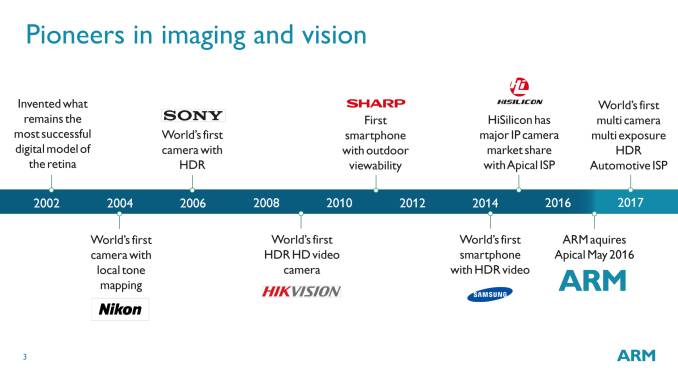
Although there are many ISP suppliers in the market, it is a rapidly growing and highly competitive market. However, the Mali-C71 has a notable feature: ARM aims to aggressively capture the high-end market with this chip.
In 2016, ARM acquired imaging technology developer Apical, which specializes in ISP and computer vision technology development—two rapidly growing markets that can integrate well with ARM’s existing product lines. With the establishment of ARM’s new imaging division, Apical’s previous product roadmap has become a reality.
The Mali-C71 is ARM’s first ISP designed specifically for Advanced Driver Assistance Systems (ADAS) and is the first product in the ARM Mali Camera series.
ADAS is a “lucrative” market. According to data from market research firm Strategy Analytics, in the coming years, mid-sized cars (like the Volkswagen Golf) will be equipped with at least 3 cameras; by 2023, most high-end cars on the market will have up to 12 cameras.
ARM’s expectation—indeed, the expectation of most companies in the industry—is that cars will have an increasing number of processors, and the level of automotive electronics will continue to rise. Although autonomous vehicles are the ultimate goal, the reality is that mass-produced autonomous vehicles are still a long way from consumers.
Thus, ARM is focusing more directly on processor design to enhance certain functionalities of Level 1 and Level 2 assisted driving. ARM aims for the number of cameras in cars to increase exponentially, with a clear goal: to become a supplier of processing data from these cameras or to provide IP to those suppliers.
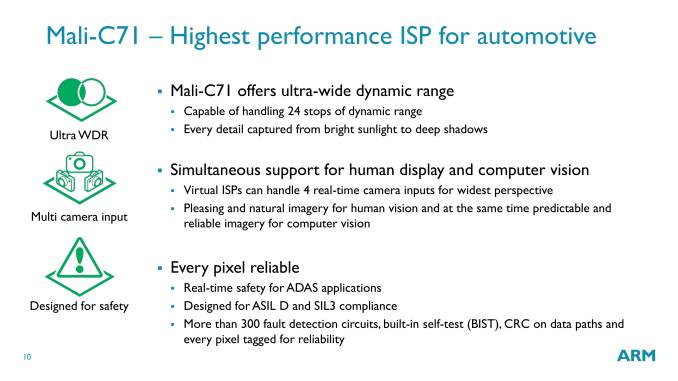
Functionally, the Mali-C71 is a high-performance ISP: it can provide ultra-wide dynamic range (UWDR) of up to 24 stops—under certain conditions, the details provided even exceed what the human eye can discern. This means it can more easily distinguish shadows in sunlight in applications like ADAS.
The Mali-C71 has a pixel throughput of up to 1.2GPixels/second, which is 1.2 billion pixels per second. It can support up to four different cameras simultaneously, with each camera capable of up to 4K resolution. If manufacturers want to place more than four cameras in a car, they can opt to set up multiple ISPs to work together.
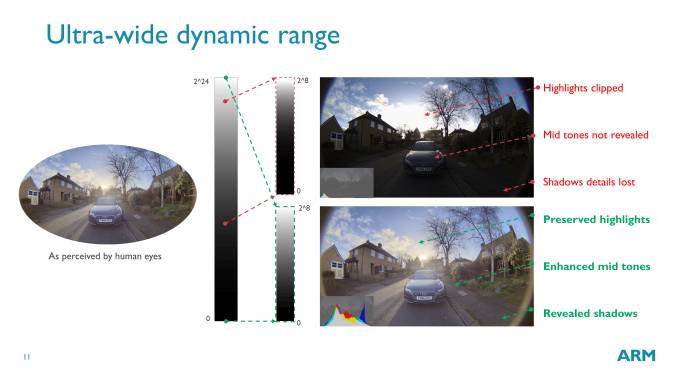
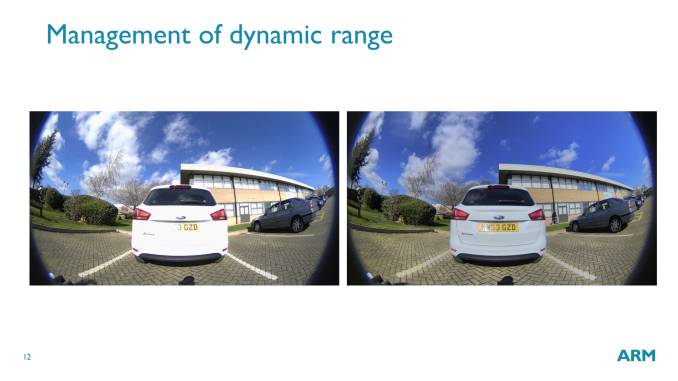
*To detect objects in well-lit conditions, cameras must have sufficient dynamic range to identify all elements in the captured scene.
Dynamic range and reliability are two key focuses for ARM. The former is very useful for ADAS applications, while the latter is crucial for object recognition during driving. The ultimate goal of the Mali-C71 is to effectively and appropriately process imaging data.
The best DSLR cameras can achieve about 15 stops of dynamic range, while the Mali-C71 can process a dynamic range equivalent to 24 stops through multiple exposures, removing noise from the captured data and synthesizing it to produce an ultra-wide dynamic range image, which is then sent to a display device or computer vision engine.
Cars need to be able to “see” clearly in both darkness and sunlight—since many in the industry aim for fully visual (no LIDAR/Radar) autonomous driving, the C71 needs to support sufficient stops to capture these dynamic ranges.
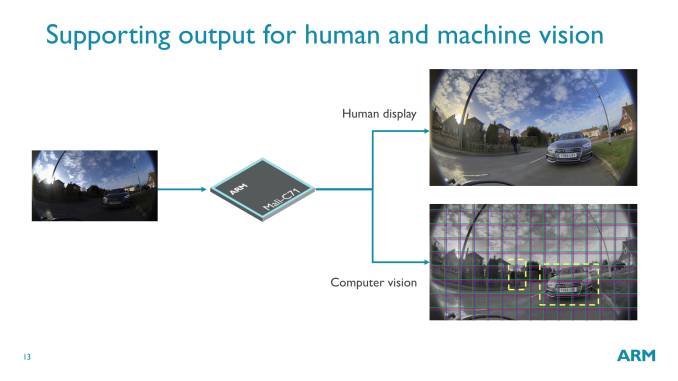
Integrating the standard imaging technologies used in smartphones or consumer-grade video cameras into cars is not feasible, as these complex imaging technologies must be capable of rapidly processing and analyzing images under extreme conditions and meet stringent automotive safety design requirements.
According to New Intelligent Driving, the ARM Mali-C71 was born to meet such challenges, fully considering the needs of ADAS System-on-Chip (SoC) during its design process, including adjustments for extreme lighting and climate conditions.
When cameras are used as inputs for ADAS—such as part of a pedestrian protection or driver fatigue detection system—they must meet the strictest reliability and functional safety standards.
ARM states that the design of the Mali-C71 meets functional safety standards including ISO26262, ASIL D, IEC 61508, and SIL3, and will provide safety packages for these standards. This image signal processor has over 300 dedicated fault detection circuits, capable of offering low latency and advanced error detection.
Additionally, ARM provides all reference software for controlling the image signal processor, sensors, automatic white balance, and automatic exposure, and plans to develop complete ASIL-compliant automotive software.
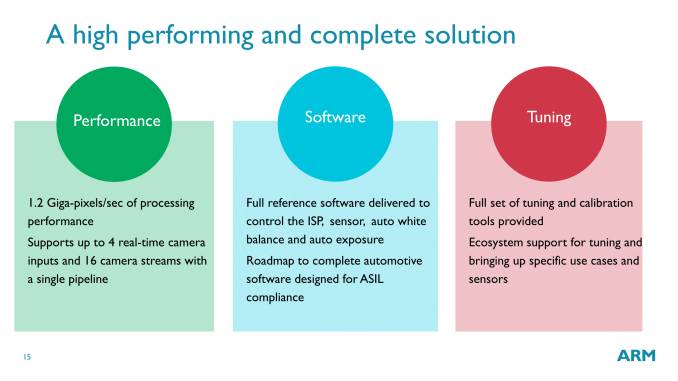
Although ARM has not disclosed specific partners, they have indicated that the first partners for the Mali-C71 have begun developing silicon samples. The ultimate customers for the Mali-C71 are automotive manufacturers. However, even if chip designers adopt it, it may take several years before it appears in mass-produced vehicles.
From a hardware perspective, most automotive manufacturers believe that the current automotive electronic hardware lifecycle is much longer than that of consumer electronics, such as smartphones, which is 2 to 3 years, while cars last 5 to 8 years. In terms of usage environment, cars are used dynamically, while smartphones are used statically. Cars must ensure life safety, while smartphones do not involve life safety in abnormal conditions caused by extreme cold or heat.
These reasons are enough to deter automotive manufacturers from change; of course, there are more supply chain interests and games behind this. This also means that ARM, which is entering the automotive field through ADAS ISP, must be prepared for a long-term “battle.”

Recommended Reading:
ARM Releases Mali-C71 Processor, Focus on Autonomous Driving
Click“Read Original” to see training class details,
Long press to recognize the QR code in the image, to participateSign up。
